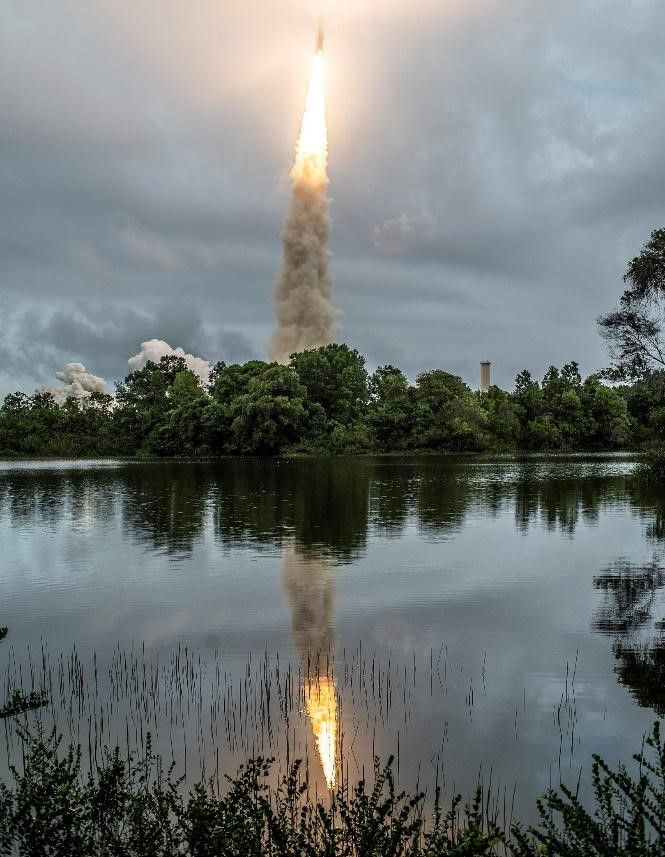By: Tristan Yuen
On December 25 of 2021, NASA launched the James Webb Telescope in cooperation with ESA, Northrop Grumman, and Arianespace. For a $10 billion USD telescope, there must be some sort of way to keep it safe though. Otherwise, that’s $10 billion wasted.
The telescope measures around 69.5 feet long, 46.5 feet wide, and 28 feet tall, making it the largest space telescope to be made so far.
Its primary mirror, segmented into 18 hexagons, each measuring 4.3 feet across, has a diameter of 21.7 feet, a surface area of 270 square feet, and weighs 1550 pounds on Earth.
The size of the James Webb Telescope’s mirror and its composition of beryllium and an extremely thin dust coat of gold also lend to the telescope the title of most powerful flying telescope ever made.
James Webb Telescope boasts the largest mirror to ever fly, ever. On top of that, because the mirror is certain to be damaged in its 10-year lifetime in space, scientists overengineered the mirror so it could continue providing pictures useful enough to study even if it was severely damaged.
These features include repositionable mirror segments and five layers of a thin sheet of a composite called Kapton coated in aluminum. These sheets, the outermost containing an additional coating of doped silicon, shield the massive mirror from any heat emanating from the sun, earth, and moon.
This sunshield is required because James Webb Telescope is an infrared telescope (the telescope operates at a temperature of 7 kelvin, or minus 447 Fahrenheit), and the more heat allowed to reach the mirror the blurrier the images become.
In order to protect the sunshield however, there is only one stopgap to ensure that the sunshield does not tear and break down: ripstops. Micrometeors cannot be stopped from slamming into the sunshield, but ripstop will at least ensure that these space particles do not leave any impactful damage.
Along with the sunshield and the massive mirror that sits in front of all the equipment, the equipment is also shielded by an outer shell that is nearly impenetrable by the smaller-than-sand meteors the NASA scientists worry about.
As for the delicate equipment inside the telescope – the equipment that stabilizes and corrects the trajectory of the telescope, if need be, collects and stores all the electricity James Webb uses, takes and uploads every picture the telescope will ever take, and adjusts and ensures the telescope’s mirror works properly and as efficiently as possible – there is a near-zero chance that this equipment could be damaged.
But how is the mirror protected? Despite seemingly logical reasoning, the mirror is not shielded by a large tube like the Hubble Space Telescope is. This is, however, for a reason.
The difference between the Hubble Space Telescope and the James Webb telescope is that the James Webb Telescope is an infrared telescope. A tube of metal covering the mirror might protect the mirror from micrometeors but it would also trap a lot of unnecessary heat inside the telescope. The sunshield would eventually be rendered useless because, though the sunshield certainly removes almost all heat from reaching the mirror, whatever heat gets past the five layers of security gets trapped in the big tube of metal and accumulates inside until James Webb Telescope is practically useless.
Do we just let these micrometeors beat up the telescope then? Yes! The telescope is so overengineered that its performance in the past six months of service have been much better than expected and needed.
In these past six months the telescope has already been noticeably struck five times, and each strike was so negligible that there was practically no difference in the image quality before and after each strike. In the situation where a freak accident happens and a hole larger than a few millimeters (invisible to the naked eye) appears, each mirror segment can be repositioned separately to correct any minor mistakes a dent might cause to image quality.
This is done via six actuators behind each segment. These actuators can adjust the segment’s yaw, pitch, roll, and even its position relative to the other segments of the mirror. In addition to these six actuators, a seventh can also adjust the shape of the segment. These actuators, though they might not do so perfectly, can correct the segment such that the image resolution will be affected as little as possible.
Because of all these feats of engineering, James Webb’s sunshield, its protective shell, and its easily repositionable mirror segments, we can guarantee that the telescope will continue to work far into the future.
Citations:
Basic info on the telescope: webbtelescope.org/quick-facts/telescope-quick-facts
Launch: webb.nasa.gov/content/about/launch.html
Composition of the mirror: www.nasa.gov/mission_pages/webb/about/index.html
Cool video on micrometeor impacts: www.youtube.com/watch?v=abs-lNhneho











